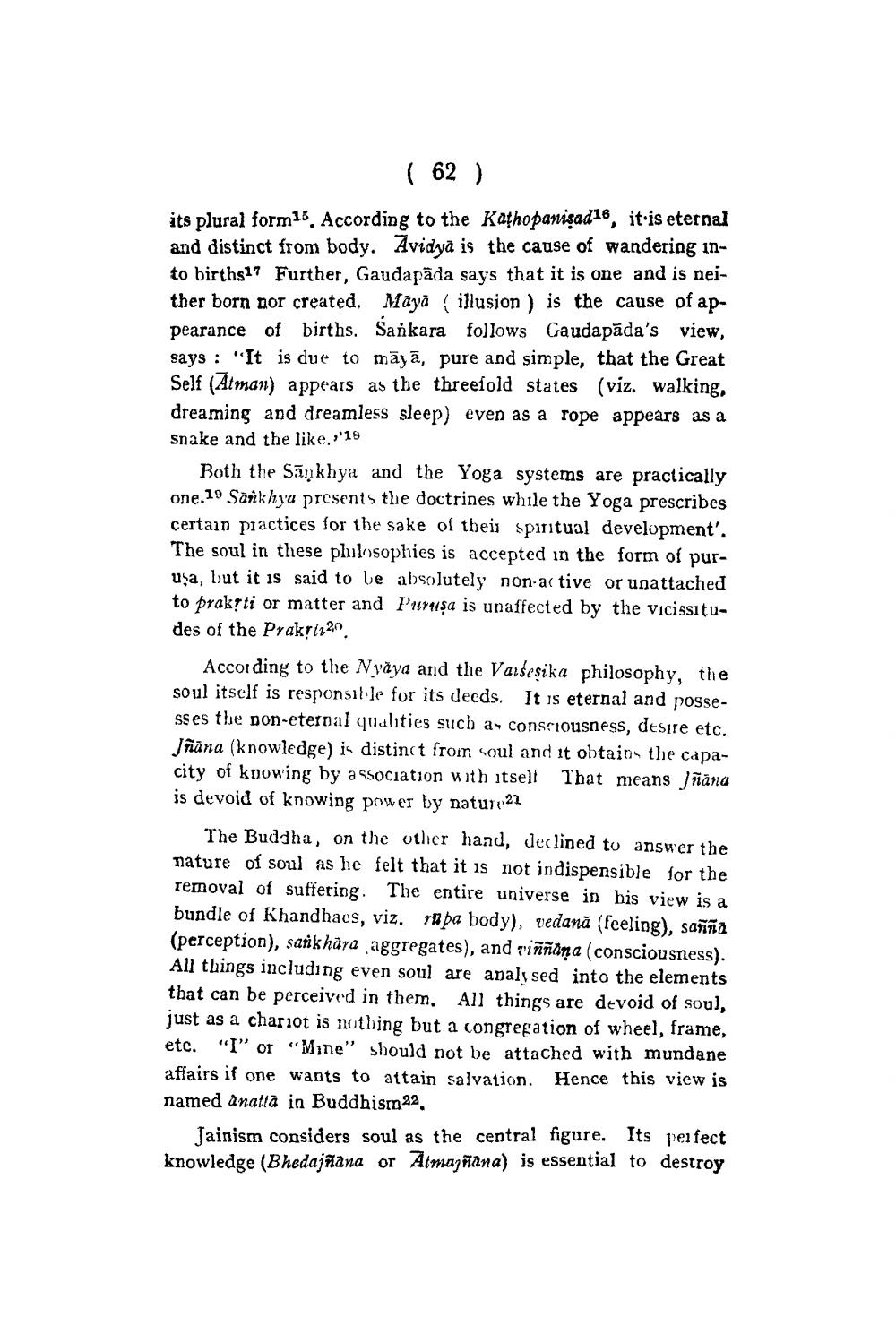________________
( 62 )
its plural form15. According to the Kathopanisad16, it is eternal and distinct from body. Avidya is the cause of wandering into births17 Further, Gaudapada says that it is one and is neither born nor created. Maya (illusion) is the cause of appearance of births. Sankara follows Gaudapada's view, says: "It is due to maya, pure and simple, that the Great Self (Atman) appears as the threefold states (viz. walking, dreaming and dreamless sleep) even as a rope appears as a snake and the like, '18
Both the Sankhya and the Yoga systems are practically one.19 Sankhya presents the doctrines while the Yoga prescribes certain practices for the sake of their spiritual development'. The soul in these philosophies is accepted in the form of puruşa, but it is said to be absolutely non-active or unattached to prakṛti or matter and Puruşa is unaffected by the vicissitudes of the Prakṛiz20.
According to the Nyaya and the Vaiseṣika philosophy, the soul itself is responsible for its deeds. It is eternal and possesses the non-eternal qualities such as consciousness, desire etc. Jñana (knowledge) is distinct from soul and it obtains the capacity of knowing by association with itself That means Jñana is devoid of knowing power by nature21
The Buddha, on the other hand, declined to answer the nature of soul as he felt that it is not indispensible for the removal of suffering. The entire universe in his view is a bundle of Khandhacs, viz. rupa body), vedană (feeling), saññā (perception), sankhara aggregates), and viññana (consciousness). All things including even soul are analysed into the elements that can be perceived in them. All things are devoid of soul, just as a chariot is nothing but a congregation of wheel, frame, etc. "I" or "Mine" should not be attached with mundane affairs if one wants to attain salvation. Hence this view is named anatta in Buddhism22.
Jainism considers soul as the central figure. Its perfect knowledge (Bhedajñāna or Atmajñāna) is essential to destroy




